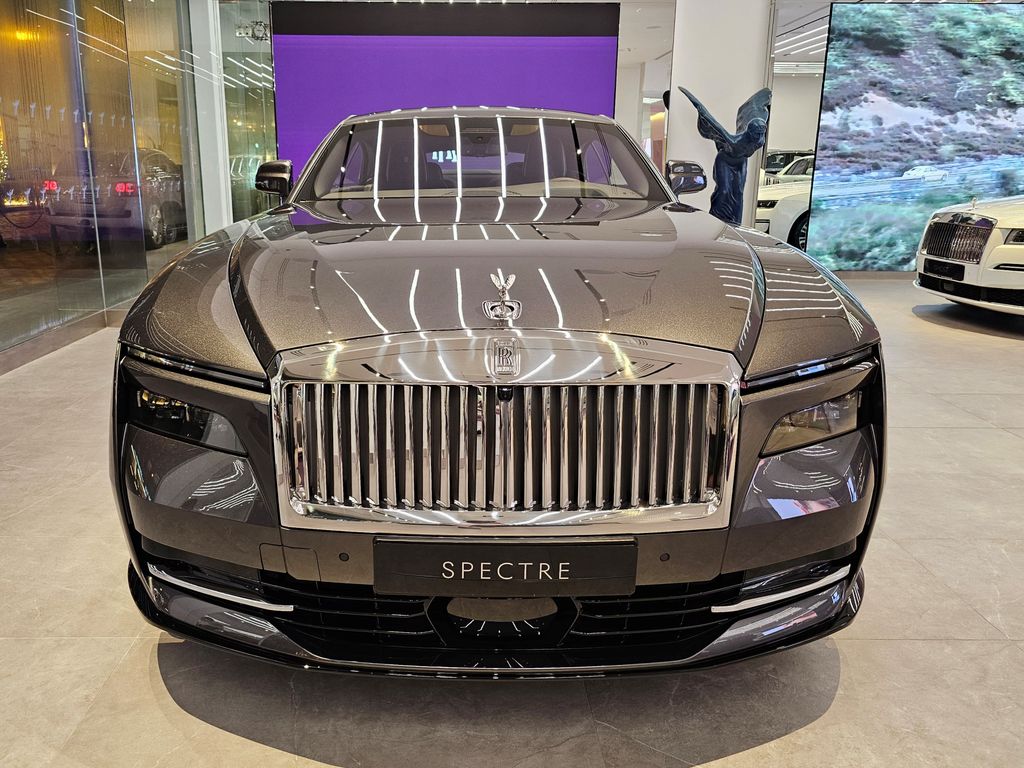
Under the blistering heat of an August day at a Ford plant in Louisville, Kentucky, an announcement reverberated through the automotive world, signaling a potential seismic shift. Ford CEO Jim Farley, a self-proclaimed lifelong petrol head, unveiled a $30,000 electric pickup truck slated for release in 2027, boldly pitching it as a new “Model T moment.” This isn’t just about a new vehicle; it’s a profound declaration of intent, a breakthrough designed to radically reinvent how cars and trucks are assembled and, by extension, how America drives. The stakes are undeniably high, as Ford navigates rising tariffs, a softening EV demand, escalating labor costs, and a political climate increasingly hostile to electrification. The company’s colossal $5 billion investment underscores its determination to remain a profitable U.S. automaker, challenging its long-standing combustion-first image, which for decades has been anchored by the enormous success of its F-series trucks.
This strategic pivot comes at a critical juncture for Ford, whose EV division, Model e, posted a $1.3 billion quarterly loss, with nearly $5 billion in expected EV-related losses this year. Sales of its electric F-150 Lightning and Mustang Mach-E have slowed, highlighting the immense perception gap between its gas-guzzling monster trucks and the green promise of EVs. Ford’s “Built Ford Tough” mantra, once its greatest strength, now faces the challenge of adapting to a future where affordability, efficiency, and sustainability are paramount. The company is borrowing from Tesla’s playbook, not just in technology but in an entirely reimagined manufacturing ethos, aiming to disrupt the U.S. auto industry by making electric trucks accessible and desirable for the mass market.
Our journey into this audacious vision will uncover the core innovations driving Ford’s next generation of electric vehicles. We’ll delve into the groundbreaking Universal EV Platform, the revolutionary assembly “tree” manufacturing process, and the strategic choice of U.S.-made LFP batteries. We’ll also examine the transformation of the Louisville Assembly Plant, the impressive performance metrics of the upcoming pickup, and the profound implications of this strategic shift. This is more than an introduction to a new truck; it’s an in-depth look at Ford’s high-stakes gamble to redefine its legacy and secure its future in an electrified world.

1. **The Vision of the $30,000 Electric Truck**Ford’s announcement of a $30,000 midsize electric pickup truck represents a monumental challenge to the status quo in the electric vehicle market, particularly in America, where affordable electric trucks have remained largely elusive. Automakers, for the most part, have concentrated on producing hulking, expensive pickups with massive batteries, placing them out of reach for many consumers. Ford, with this new offering, aims to democratize EV ownership, making electric trucks a viable option for the average American family. This strategic price point is poised to disrupt the entire U.S. auto industry, which has long revered trucks as a cornerstone of its identity and sales.
The context of this affordability is striking. Currently, the Ford F-150 Lightning, touted as the most affordably priced electric pickup available, starts at $49,780. The average starting price for electric pickups hovers around $68,578, a figure well beyond the budgets of countless consumers. Ford’s new electric pickup will effectively cost nearly $20,000 less than its F-150 Lightning sibling, an unprecedented reduction that could open up a vast, untapped market. This isn’t merely a minor price adjustment; it’s a strategic move designed to undercut competitors and capture a significant segment of price-sensitive buyers.
Ford CEO Jim Farley articulated this vision clearly, stating that these new vehicles, built on the Universal EV Platform, will be “affordable for the average family.” He emphasized that despite the aggressive price point, these vehicles will still be “packed with innovative features, making them fun and enjoyable to drive.” This commitment to value without sacrificing quality or user experience is central to Ford’s strategy. It’s a direct response to consumer needs and a bold attempt to secure a new consumer base by offering a budget-friendly alternative that doesn’t compromise on innovation or capability.
Car Model Information: 2024 Nissan Rogue SV
Name: Fourteenth-generation Ford F-Series (P702)
Caption: 2021 F-150 XL SuperCrew
Manufacturer: Ford Motor Company
Aka: Ford Lobo (Mexico)
Production: October 12, 2020 – present
ModelYears: 2021–present
Assembly: Claycomo, Missouri,Mickleham, Victoria
Designer: Raleigh Haire (2016)
Class: pickup truck
BodyStyle: regular cab,extended cab,crew cab
Layout: Front-engine, rear-wheel drive layout,Front-engine, four-wheel drive layout
Platform: Ford T platform#T3
Related: Unbulleted list
Engine: Unbulleted list
Motor: cvt,BorgWarner
Transmission: Ford-GM 10-speed automatic transmission,Manumatic,Automatic transmission
Drivetrain: Hybrid vehicle drivetrain#Power-split or series-parallel hybrid
Battery: val,Lithium-ion battery
Wheelbase: unbulleted list
Length: unbulleted list
Abbr: on
Width: unbulleted list
Height: unbulleted list
Weight: cvt
Predecessor: Ford F-Series (thirteenth generation)
Charging: Vehicle-to-grid
Categories: 2020s cars, All articles with unsourced statements, Articles with short description, Articles with unsourced statements from September 2023, Cars introduced in 2020
Summary: The fourteenth-generation Ford F-Series is a range of pickup trucks produced by Ford, introduced for the 2021 model year. This was the first generation to include a fully-electric and hybrid pickup truck among the offerings, with the F-150 Lightning EV having entered production in 2022. The F-150 is positioned above the mid-size Ranger but below the larger Super Duty in the Ford truck lineup.
Get more information about: Ford F-Series (fourteenth generation)
Buying a high-performing used car >>>
Brand: Ford Model: Electric Pickup Truck
Price: $22,292 Mileage: 21,865 mi.
Read more about: 15 Vehicles Drivers Wish They Never Bought: An In-Depth Look at Buyer’s Remorse Magnets for Informed Consumers
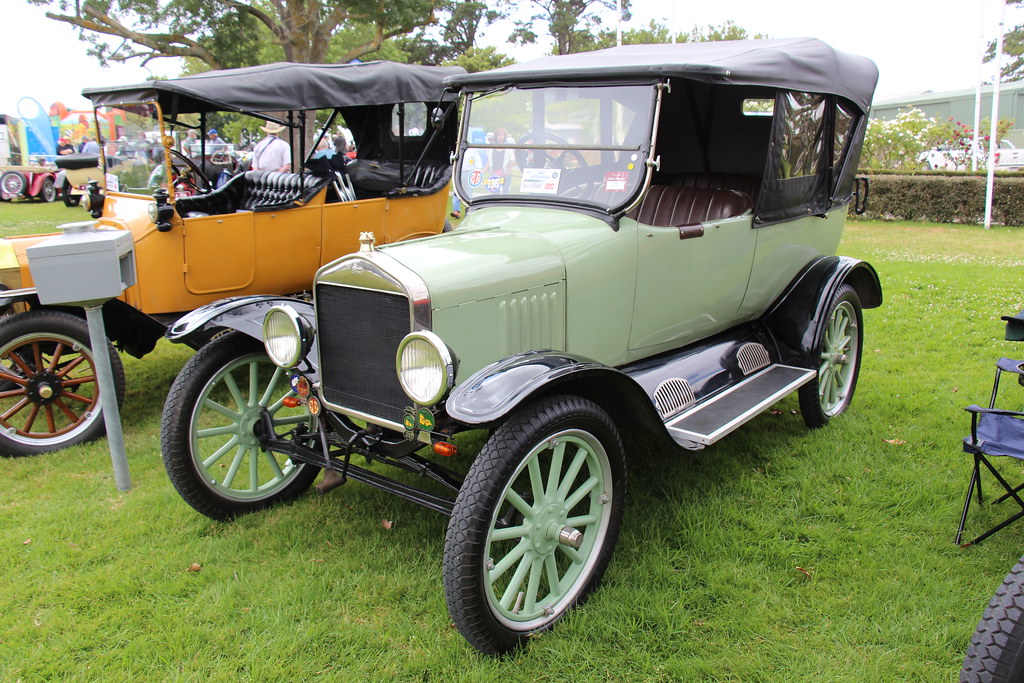
2. **Echoes of the Model T: A New Era of Accessibility**Jim Farley’s comparison of the new $30,000 electric pickup to a “Model T moment” is not merely marketing rhetoric; it’s a profound statement of intent that harks back to Ford’s foundational legacy. The original Model T was revolutionary because it made cars affordable, adaptable, and serviceable, transforming not just transportation but manufacturing and labor across America. Ford’s new EV pickup aims to replicate this epoch-making effect for the electric era, challenging the prevailing notion that EVs are exclusively a luxury or niche product.
This comparison underscores the truck’s core mission: mass-market accessibility. The Model T broke down economic barriers to car ownership, and Ford’s new electric pickup is engineered to do the same for electric vehicles. At its projected $30,000 price point, it significantly undercuts many existing EV competitors, including its own, thereby widening the potential buyer base dramatically. This is a deliberate strategy to position Ford at the forefront of the affordable EV movement, especially as federal EV tax credits are set to expire, making price a more critical factor than ever for consumers.
Beyond just affordability, the “Model T moment” implies a broader industrial shift. It signals a decisive move away from Ford’s historical reliance on gas-powered SUVs and pickups in favor of electric vehicles, a pivot that could redefine Ford’s lineup over the next decade. The success or failure of this $30K truck, much like its historic predecessor, could shape the direction of the auto industry for years to come. It’s a high-stakes bet on America, where Ford hopes innovation meets efficiency to create a product that becomes a ubiquitous symbol of a new electric age.
Car Model Information: 2024 Nissan Rogue SV
Name: Ford F-150 Lightning
Manufacturer: Ford Motor Company
Related: Ford F-Series (fourteenth generation)
Assembly: Dearborn, Michigan
ModelYears: 2022–present
Production: April 2022 – present
Layout: Dual-motor, four-wheel-drive
Platform: Ford T platform#T3
Class: Pickup truck
Sp: us
Battery: lithium-ion
Motor: permanent magnet motor
ElectricRange: Unbulleted list
Abbr: on (extended battery)
Powerout: Unbulleted list
Charging: Unbulleted list
Designer: Unbulleted list
Wheelbase: cvt
Length: cvt
Width: cvt
Height: cvt
Weight: cvt
Categories: All Wikipedia articles in need of updating, All Wikipedia articles written in American English, All articles containing potentially dated statements, All articles with unsourced statements, Articles containing potentially dated statements from June 2022
Summary: The Ford F-150 Lightning is a battery electric full-size light duty truck unveiled by the Ford Motor Company in May 2021 as part of the fourteenth generation Ford F-Series. Four models have been announced, and all models initially will be dual-motor, four-wheel-drive, with EPA range estimates of 240–320 mi (390–510 km). A commercial-grade version of the all-wheel drive (AWD) truck is sold in the United States, with higher-power/trim/range models also sold. The F-150 Lightning began production on April 26, 2022.
Get more information about: Ford F-150 Lightning
Buying a high-performing used car >>>
Brand: Ford Model: EV pickup
Price: $22,292 Mileage: 21,865 mi.
Read more about: 12 Classic Boomer Cars Millennials Avoid: The Hidden Factors Behind Younger Generations’ Disinterest

3. **The Ford Universal EV Platform: Foundation of Disruption**Central to Ford’s ambitious plan is the brand-new Universal EV Platform, described by CEO Jim Farley as the “foundation for a new generation of electric vehicles.” This isn’t just an incremental improvement; it’s a blank-slate approach, akin to what Tesla undertook more than a decade ago, designed to radically cut costs, simplify manufacturing, and establish a highly adaptable base for future models. The context explicitly states that this platform will spawn a family of next-generation EVs, starting with the $30,000 midsize pickup.
This platform is engineered with efficiency at its core. Ford reports that the Universal EV Platform will use 20% fewer parts, 25% fewer fasteners, and require 40% fewer workstations within the factory compared to typical vehicle production. These reductions are not trivial; they translate directly into substantial cost savings and significantly streamlined assembly processes. By optimizing the number of components and simplifying the assembly steps, Ford aims to achieve unprecedented levels of manufacturing efficiency, which are crucial for delivering an affordable EV at scale.
The modularity of the Universal EV Platform is another key feature, designed for maximum flexibility. A graphic shared with the press illustrates its capability to underpin a variety of body styles, including a pickup truck, a three-row SUV, a cargo van, and a small crossover. While some of these body styles, such as the three-row electric SUV, have seen cancellations in the past, the inherent adaptability of the platform indicates Ford’s long-term vision for a diverse and cost-effective electric vehicle lineup. This strategic foundation will allow Ford to rapidly iterate and respond to evolving market demands with new EV offerings.
Car Model Information: 2024 Nissan Rogue SV
Name: Ford Ranger
Caption: 2011 Ford Ranger XLT
Manufacturer: Ford Motor Company
Production: 1982–2011,October 2018 – present
ModelYears: 1983–2012,2019–present
Class: Pickup truck
Layout: Front-engine, rear-wheel-drive layout,rear-wheel drive
Predecessor: Mazda B-Series#Ford Courier
Categories: 1990s cars, 2000s cars, 2010s cars, 2020s cars, All-wheel-drive vehicles
Summary: The Ford Ranger is a range of pickup trucks manufactured and marketed by Ford Motor Company in North and South America under the Ford Ranger nameplate. Introduced in early 1982 for the 1983 model year, the Ranger is currently in its fifth generation. Developed as a replacement for the Mazda-sourced Ford Courier, the model line has been sold across the Americas; Ford of Argentina began production of the Ranger for South America in 1998.
Through its production, the model line has served as a close rival to the Chevrolet S-10 and its Chevrolet Colorado successor (and their GMC counterparts), with the Ranger as the best-selling compact truck in the United States from 1987 to 2004. From 2012 to 2018, the Ranger model line was retired in North America as Ford concentrated on its full-size F-Series pickup trucks. For the 2019 model year, Ford introduced a fourth generation of the Ranger (after a seven-year hiatus). The first mid-size Ranger in North America, the model line is derived from the globally marketed Ford Ranger (revised to fulfill North American design requirements).
The first three generations of the Ranger were produced by Ford at its Louisville Assembly (Louisville, Kentucky), Edison Assembly (Edison, New Jersey), and Twin Cities Assembly (Saint Paul, Minnesota) facilities; the final 2012 Ranger was the final vehicle produced at the St. Paul facility. The current fourth-generation Ranger is manufactured by Ford at Wayne Stamping & Assembly (Wayne, Michigan). Ford of Argentina produced the Ranger in its General Pacheco plant from 1998 to 2011; it replaced the North American–designed version of the Ranger with the current Ranger T6 for 2012 production.
Get more information about: Ford Ranger (Americas)
Buying a high-performing used car >>>
Brand: Ford Model: midsize pickup
Price: $22,292 Mileage: 21,865 mi.
Read more about: Consumer Caution: 16 Vehicles That Consistently Fall Short on Customer Satisfaction, According to Expert Data and Owner Surveys
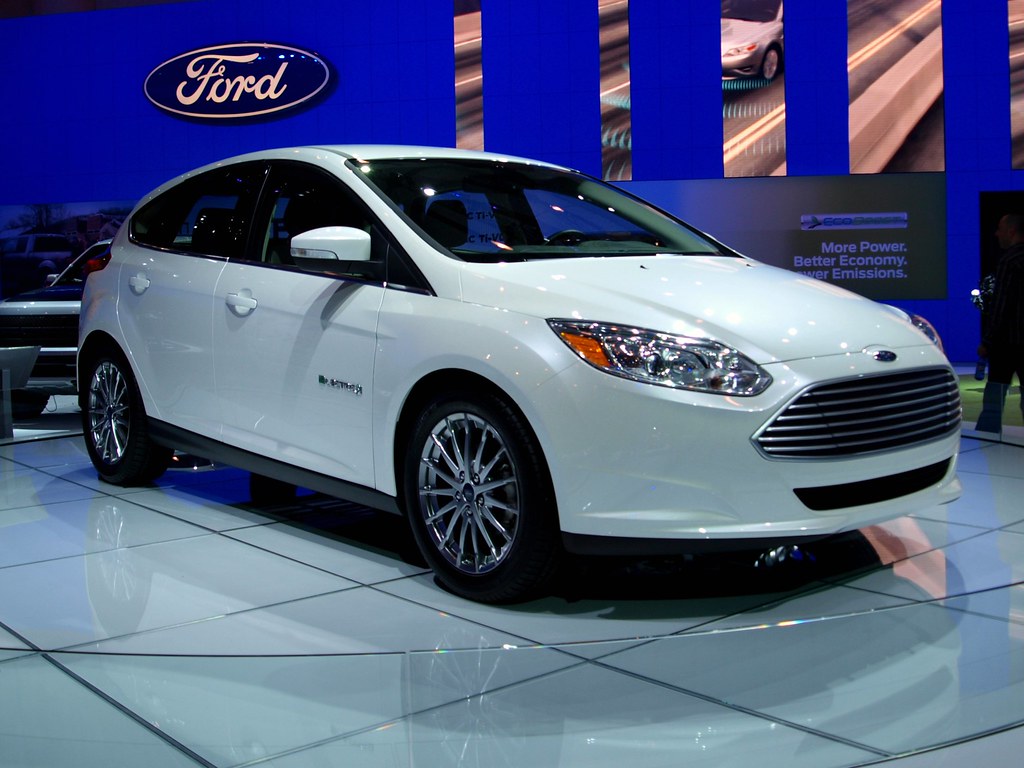
4. **Revolutionizing Production: The Assembly “Tree” System**Ford is not just introducing a new EV platform; it’s overhauling the very way vehicles are made, a change CEO Jim Farley says is the company’s biggest manufacturing change since the Model T. This radical new manufacturing technique, which Ford calls an “assembly tree,” is a direct departure from the traditional linear assembly line where vehicles move along a single path, accumulating parts until completion. This innovation is pivotal to achieving the cost reductions and efficiency gains necessary for the $30,000 price point.
The assembly tree system breaks the vehicle production process into three distinct sub-assembly lines that operate in parallel. According to Farley, “We’re gonna build it in three pieces, three separate parts, not one vehicle along one line.” Specifically, the front of the vehicle, the rear of the vehicle, and the battery will each be assembled on their own lines before joining together at a final assembly point. This simultaneous production significantly shrinks the overall time from start to finish and requires fewer stations, fundamentally reimagining the factory floor layout.
The benefits of this parallel processing are manifold. Ford claims the assembly tree will allow them to build vehicles 40% faster, with a lot less people and a lot less cost. Kevin Young, Ford’s advanced manufacturing program chief, emphasized the necessity of change, stating, “Back’s against the wall, so you have to make it happen.” This new system not only improves packaging and reduces weight but also aims for better worker ergonomics and occupies less physical space within the plant, showcasing a holistic approach to manufacturing innovation that leverages efficiency at every turn.
Read more about: 15 Cars That Become Costly Money Pits After 100,000 Miles: Essential Insights for Savvy Buyers
5. **Powering the Future: U.S.-Made LFP Batteries**Ford’s commitment to affordability and efficiency extends directly to its choice of battery technology for the new $30,000 electric truck: Lithium Iron Phosphate (LFP) batteries in a prismatic cell format. This is a strategic decision that plays a crucial role in lowering production costs while still delivering on performance and durability. LFP batteries are known for their cost-effectiveness and robustness, making them an ideal choice for a mass-market electric vehicle that aims to redefine accessibility.
The move is also significant for its domestic focus. Ford claims that this will be the first American EV to use U.S.-made LFP batteries, which will be assembled locally at its BlueOval Battery Park in Michigan. By licensing CATL’s LFP technology and manufacturing these batteries within the United States, Ford is not only securing its supply chain but also making a substantial bet on American manufacturing. This localization helps to mitigate the impact of tariffs and contributes to the “bet on America” narrative championed by CEO Jim Farley.
Beyond cost, LFP prismatic batteries offer several technical advantages. They contribute to space and weight savings within the vehicle, which are critical for overall efficiency and packaging. These batteries will form part of the truck’s structural floor, enhancing durability and simplifying the assembly process. While more specific details about battery size, driving range, and charging capabilities are still under wraps and will be revealed later, the foundational choice of U.S.-made LFP technology clearly underscores Ford’s dual objectives of affordability and robust performance for its next-generation EVs.
Car Model Information: 2024 Nissan Rogue SV
Name: Ford F-150 Lightning
Manufacturer: Ford Motor Company
Related: Ford F-Series (fourteenth generation)
Assembly: Dearborn, Michigan
ModelYears: 2022–present
Production: April 2022 – present
Layout: Dual-motor, four-wheel-drive
Platform: Ford T platform#T3
Class: Pickup truck
Sp: us
Battery: lithium-ion
Motor: permanent magnet motor
ElectricRange: Unbulleted list
Abbr: on (extended battery)
Powerout: Unbulleted list
Charging: Unbulleted list
Designer: Unbulleted list
Wheelbase: cvt
Length: cvt
Width: cvt
Height: cvt
Weight: cvt
Categories: All Wikipedia articles in need of updating, All Wikipedia articles written in American English, All articles containing potentially dated statements, All articles with unsourced statements, Articles containing potentially dated statements from June 2022
Summary: The Ford F-150 Lightning is a battery electric full-size light duty truck unveiled by the Ford Motor Company in May 2021 as part of the fourteenth generation Ford F-Series. Four models have been announced, and all models initially will be dual-motor, four-wheel-drive, with EPA range estimates of 240–320 mi (390–510 km). A commercial-grade version of the all-wheel drive (AWD) truck is sold in the United States, with higher-power/trim/range models also sold. The F-150 Lightning began production on April 26, 2022.
Get more information about: Ford F-150 Lightning
Buying a high-performing used car >>>
Brand: Ford Model: electric truck
Price: $22,292 Mileage: 21,865 mi.
6. **The Transformed Louisville Assembly Plant**The Louisville Assembly Plant in Kentucky is at the heart of Ford’s manufacturing revolution, undergoing a massive $2 billion investment to convert it into a fully modernized EV production hub. This transformation signifies a decisive shift from its current role of producing gas-powered Ford Escape and Lincoln Corsair models. The transition is scheduled for completion after the 2026 model year, clearing the way entirely for electric vehicle manufacturing.
This plant will become the primary production site for the highly anticipated $30,000 electric pickup, leveraging Ford’s new Universal EV Platform and the innovative “assembly tree” manufacturing system. The substantial investment ensures that the facility is equipped with cutting-edge technology and processes required for next-generation EV production. This strategic overhaul is not merely an upgrade; it’s a complete reimagining of the plant’s purpose, aligning it with Ford’s long-term electric future.
The conversion of the Louisville Assembly Plant is a tangible manifestation of Ford’s $5 billion commitment to electrifying its strongest brand asset. It underscores the company’s determination to bring EV manufacturing to the U.S., creating new jobs and requiring a workforce skilled in advanced manufacturing processes. This plant, once known for conventional combustion engine vehicles, is set to become a beacon of electric innovation, producing the vehicle that Ford hopes will define a new era of accessible, American-made EVs.
Read more about: 14 Cars That Broke Owners’ Trust: The Models That Left Drivers Stranded and Wishing for a Do-Over

7. **Performance and Practicality: Beyond the Price Tag**While the $30,000 price point is a headline-grabber, Ford is keen to emphasize that its new electric pickup will not be a stripped-down, bare-bones offering. Despite its aggressive affordability, the vehicle is designed to deliver a compelling package of performance and practicality that directly addresses consumer needs and expectations for a modern truck. This focus on value challenges the perception that a low-cost EV must sacrifice essential features or driving pleasure.
The truck’s specifications, though still partially under wraps, promise impressive capabilities. Ford has revealed that the new electric pickup will boast more passenger space than the all-new Toyota RAV4, a popular compact SUV known for its interior roominess. Additionally, it will feature practical truck attributes like a frunk (front trunk) and a traditional bed, offering versatile cargo solutions that are essential for pickup truck owners. These details suggest a vehicle designed for everyday usability and utility, appealing to a broad spectrum of potential buyers.
Furthermore, Ford has indicated that the truck will accelerate faster than the Mustang EcoBoost, which completes the 0-60 miles per hour sprint in around five seconds (specifically, 4.9 seconds with the performance package). This level of performance positions the electric pickup as a fun-to-drive vehicle, defying the stereotype of an entry-level EV. Farley stated that it won’t be “bare bones” at its price, suggesting it will offer a feature set comparable to or exceeding the popular Maverick, a compact truck also starting around $30,000. This combination of affordability, practicality, and spirited performance aims to make Ford’s new electric truck an undeniable force in the evolving automotive landscape.
Car Model Information: 2024 Nissan Rogue SV
Name: Ford F-150 Lightning
Manufacturer: Ford Motor Company
Related: Ford F-Series (fourteenth generation)
Assembly: Dearborn, Michigan
ModelYears: 2022–present
Production: April 2022 – present
Layout: Dual-motor, four-wheel-drive
Platform: Ford T platform#T3
Class: Pickup truck
Sp: us
Battery: lithium-ion
Motor: permanent magnet motor
ElectricRange: Unbulleted list
Abbr: on (extended battery)
Powerout: Unbulleted list
Charging: Unbulleted list
Designer: Unbulleted list
Wheelbase: cvt
Length: cvt
Width: cvt
Height: cvt
Weight: cvt
Categories: All Wikipedia articles in need of updating, All Wikipedia articles written in American English, All articles containing potentially dated statements, All articles with unsourced statements, Articles containing potentially dated statements from June 2022
Summary: The Ford F-150 Lightning is a battery electric full-size light duty truck unveiled by the Ford Motor Company in May 2021 as part of the fourteenth generation Ford F-Series. Four models have been announced, and all models initially will be dual-motor, four-wheel-drive, with EPA range estimates of 240–320 mi (390–510 km). A commercial-grade version of the all-wheel drive (AWD) truck is sold in the United States, with higher-power/trim/range models also sold. The F-150 Lightning began production on April 26, 2022.
Get more information about: Ford F-150 Lightning
Buying a high-performing used car >>>
Brand: Ford Model: electric pickup
Price: $22,292 Mileage: 21,865 mi.
Read more about: The Hydrogen Horizon: Why Toyota’s Multi-Path Gamble in EVs and Fuel Cells Could Redefine the Future, Challenging Tesla’s Electric Reign.
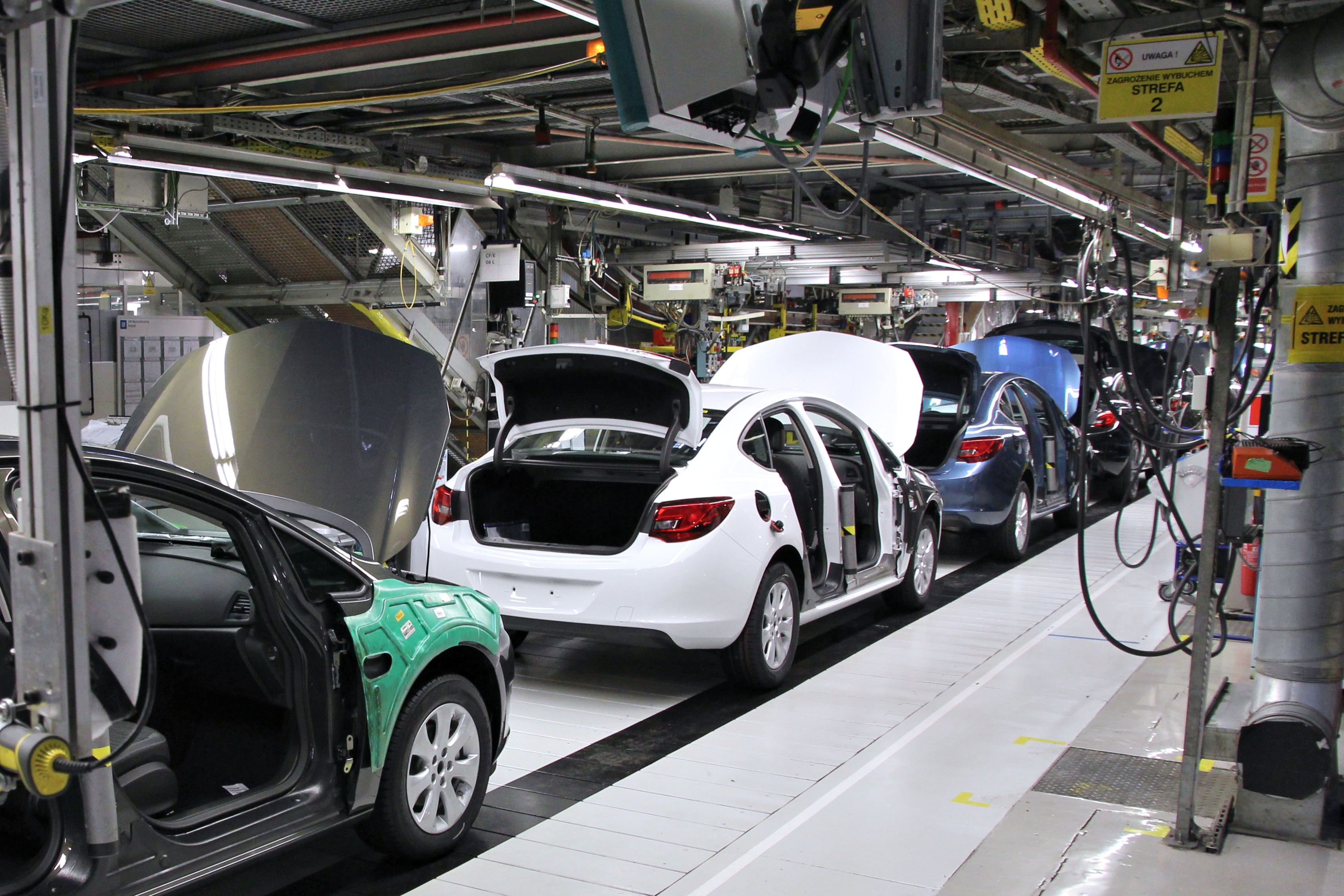
8. **Implications for the Workforce: Jobs and Retraining in an Electric Era**The shift to electric vehicle manufacturing, spearheaded by Ford’s ambitious $30,000 electric truck, brings a complex and evolving employment picture. While the conversion of the Louisville Assembly Plant secures approximately 2,200 existing jobs, the adoption of more efficient assembly processes will also lead to an estimated 600 positions being reduced through voluntary buyouts. This balance reflects the dual nature of technological disruption: securing some roles while simultaneously reshaping others.
Across both the Kentucky and Michigan projects, Ford anticipates the creation or preservation of nearly 4,000 jobs. These new roles, however, are not simply replacements for older ones. They increasingly demand specialized skills in electrical systems, battery technology, robotics, and advanced manufacturing processes. The automotive workforce of tomorrow will require a deeper understanding of these intricate, high-tech domains, signifying a fundamental evolution in required expertise.
This necessitates a significant investment in retraining. Workers currently engaged in traditional engine assembly roles will need to transition to EV-specific tasks, which are fundamentally different in scope and skillset. Such a monumental shift could spur new apprenticeship and vocational programs, not just within Ford but across the broader educational and industrial ecosystem. This commitment to skill development is crucial to ensure a seamless transition and to capitalize on the “bet on America” that underpins Ford’s strategy.
Car Model Information: 2024 Nissan Rogue SV
Name: Ford F-150 Lightning
Manufacturer: Ford Motor Company
Related: Ford F-Series (fourteenth generation)
Assembly: Dearborn, Michigan
ModelYears: 2022–present
Production: April 2022 – present
Layout: Dual-motor, four-wheel-drive
Platform: Ford T platform#T3
Class: Pickup truck
Sp: us
Battery: lithium-ion
Motor: permanent magnet motor
ElectricRange: Unbulleted list
Abbr: on (extended battery)
Powerout: Unbulleted list
Charging: Unbulleted list
Designer: Unbulleted list
Wheelbase: cvt
Length: cvt
Width: cvt
Height: cvt
Weight: cvt
Categories: All Wikipedia articles in need of updating, All Wikipedia articles written in American English, All articles containing potentially dated statements, All articles with unsourced statements, Articles containing potentially dated statements from June 2022
Summary: The Ford F-150 Lightning is a battery electric full-size light duty truck unveiled by the Ford Motor Company in May 2021 as part of the fourteenth generation Ford F-Series. Four models have been announced, and all models initially will be dual-motor, four-wheel-drive, with EPA range estimates of 240–320 mi (390–510 km). A commercial-grade version of the all-wheel drive (AWD) truck is sold in the United States, with higher-power/trim/range models also sold. The F-150 Lightning began production on April 26, 2022.
Get more information about: Ford F-150 Lightning
Buying a high-performing used car >>>
Brand: Ford Model: electric truck
Price: $22,292 Mileage: 21,865 mi.

9. **Reshaping the Supply Chain and Unlocking Supplier Opportunities**Ford’s Universal EV Platform isn’t just about radical vehicle design; it’s a blueprint for a profoundly streamlined supply chain. By reducing parts by 20%, fasteners by 25%, and workstations by 40%, Ford aims for significantly faster production cycles and lower costs. These efficiencies will ripple through the entire supplier network, demanding a lean and agile response from its partners.
Crucially, Ford’s commitment to domestic sourcing for components like U.S.-made LFP batteries presents substantial opportunities for American suppliers. Companies specializing in EV components, battery materials, and high-voltage electrical systems stand to gain new contracts and expanded business. This localization strategy helps mitigate the impact of tariffs and strengthens the national manufacturing base, aligning with broader economic policy goals.
Regional suppliers situated near the Louisville Assembly Plant in Kentucky and the BlueOval Battery Park in Michigan are particularly poised for growth. These local partnerships will foster tighter integration and reduced logistical complexities, contributing to Ford’s goal of unprecedented manufacturing efficiency. However, this transformation also signals a challenging future for suppliers whose business remains heavily tied to internal combustion engine components, as demand for these legacy parts inevitably declines.

10. **Broader Economic Ripple Effects Across Local and National Economies**The substantial investments in Kentucky and Michigan are set to generate significant economic ripple effects far beyond the factory gates. Both Louisville and the areas around Michigan’s BlueOval Battery Park can anticipate increased economic activity, from the initial construction phases of plant overhauls to ongoing demand for logistics, maintenance, and professional services supporting the new EV production. This influx of capital and activity promises a boost to local businesses and employment.
The demand for skilled labor, particularly in advanced manufacturing and EV-specific roles, is expected to attract workers from outside these regions. This demographic shift could influence local housing markets, increase competition for talent, and necessitate community infrastructure development. It’s a dynamic interplay between industrial growth and societal evolution, requiring careful planning and adaptation from local governments and communities.
Furthermore, Ford’s innovative manufacturing systems, such as the assembly “tree” and the Universal EV Platform, could establish new industry benchmarks. This technology transfer has the potential to become a model for other automakers, spurring similar investments and transformations across the industry. Such widespread adoption would accelerate the transition to electric vehicles on a national scale, further cementing America’s role in the future of automotive manufacturing.

11. **The Enduring “Model T” Legacy: Beyond Affordability to Systemic Change**Jim Farley’s comparison of the $30,000 electric pickup to a “Model T moment” transcends mere product affordability; it’s a vision for systemic industrial transformation. The original Model T didn’t just make cars accessible; it revolutionized manufacturing processes, reshaped labor practices, and fundamentally altered transportation across America. Ford’s new EV pickup aims to replicate this profound, epoch-making effect for the electric era, challenging established norms and forging new pathways.
The core of this legacy lies in accessibility. At its projected price point, the electric pickup significantly undercuts many existing EV competitors, including Ford’s own F-150 Lightning. This widening of the potential buyer base becomes even more critical as federal EV tax credits are set to expire, shifting the focus squarely onto the vehicle’s inherent value. Ford is positioning itself to make EV ownership a practical reality for the average family, a true democratization of green technology.
Beyond individual purchases, the “Model T moment” implies unparalleled scalability. The underlying Universal EV Platform and assembly “tree” system are engineered for replication across multiple EV models, including potential SUVs, vans, and crossovers. This modularity multiplies its potential impact, allowing Ford to rapidly diversify its electric lineup and meet evolving market demands efficiently and cost-effectively.
Ultimately, this initiative signals a decisive industrial shift, a bold pivot away from Ford’s long-standing reliance on gas-powered SUVs and pickups. This profound strategic change could redefine Ford’s entire product lineup over the next decade, much like the original Model T set the course for internal combustion vehicles. The success or failure of this $30,000 truck, therefore, could dictate the direction of the auto industry for years to come, solidifying Ford’s place in an electrified future or highlighting the immense challenges of such a transformation.
Car Model Information: 2019 Volkswagen Atlas 3.6L SE
Caption: 1925 Ford Model T Touring Car
Manufacturer: Ford Motor Company
Production: October 1908 – May 1927
Assembly: collapsible list
Designer: Childe Harold Wills
Class: Economy car
BodyStyle: collapsible list
Layout: FMR layout
Engine: straight-4
Transmission: planetary gear
Wheelbase: 100.0 in
Abbr: on (1912 roadster)
Length: 134 in
Width: 1676 mm
Height: 1860 mm
Weight: convert
Predecessor: Ford Model N
Successor: Ford Model A (1927–1931)
Categories: 1900s cars, 1908 establishments in the United States, 1910s cars, 1920s cars, All articles needing additional references
Summary: The Ford Model T is an automobile that was produced by the Ford Motor Company from October 1, 1908, to May 26, 1927. It is generally regarded as the first mass-affordable automobile, which made car travel available to middle-class Americans. The relatively low price was partly the result of Ford’s efficient fabrication, including assembly line production instead of individual handcrafting. The savings from mass production allowed the price to decline from $780 in 1910 (equivalent to $26,322 in 2024) to $290 in 1924 ($5,321 in 2024 dollars). It was mainly designed by three engineers, Joseph A. Galamb (the main engineer), Eugene Farkas, and Childe Harold Wills. The Model T was colloquially known as the “Tin Lizzie”.
The Ford Model T was named the most influential car of the 20th century in the 1999 Car of the Century competition, ahead of the BMC Mini, Citroën DS, and Volkswagen Beetle. Ford’s Model T was successful not only because it provided inexpensive transportation on a massive scale, but also because the car signified innovation for the rising middle class and became a powerful symbol of the United States’ age of modernization. With over 15 million sold, it was the most sold car in history before being surpassed by the Volkswagen Beetle in 1972.
Get more information about: Ford Model T
Buying a high-performing used car >>>
Brand: Ford Model: Model T
Price: $17,355 Mileage: 72,895 mi.

12. **Navigating the Competitive EV Landscape and the Software War**Ford’s push into the affordable EV market is not simply a battle against domestic rivals like Tesla and Rivian; it’s a global contest. Formidable Chinese EV makers, renowned for their affordability, range, and advanced technology, pose a significant competitive threat, particularly in overseas markets. Ford CEO Jim Farley’s personal experience praising a Xiaomi SU7 as “fantastic” underscores the quality and innovation coming from international players, even as the U.S. government implements aggressive measures to curb their import.
The competitive arena also highlights a “software war” where pure EV makers like Tesla and Rivian have historically held an edge. These companies embraced a “software-first” approach and zonal architecture that many legacy automakers have struggled to implement. Ford is directly addressing this by introducing a zonal architecture for its new EV platform, effectively cutting over 4,000 feet of wiring harnesses compared with the Mustang Mach-E – a move similar to those made by Tesla and Rivian in their past innovations.
This simplification of wiring is far from trivial; it’s a critical step in improving vehicle packaging, reducing weight, and enabling more capable vehicle functions through fewer, yet more powerful, Electronic Control Units (ECUs). Ford’s adoption of this advanced architecture signifies a serious commitment to catching up and even surpassing competitors in a crucial area of EV development. It demonstrates an understanding that the future of automotive innovation lies as much in intelligent software and simplified electronics as it does in mechanical engineering.
Read more about: Remembering 2005? A Deep Dive into Google’s Transformative Evolution from Search to Global Tech Empire

13. **Adapting to Evolving Consumer Behavior and the Political Divide**Ford’s bold EV strategy unfolds against a backdrop of evolving consumer behavior and a complex political landscape. The company is navigating a period of softening EV demand and an increasingly hostile political climate toward electrification, particularly among a significant segment of the truck-buying demographic. This necessitates a nuanced approach to marketing and product positioning to overcome deeply entrenched perceptions.
The expiration of federal EV tax credits after September 30, 2025, further amplifies the importance of Ford’s $30,000 price point. With fewer government incentives, affordability becomes an even more critical factor for consumers considering an EV. Ford’s new truck emerges as a budget-friendly alternative at a pivotal moment, potentially cushioning the impact of waning subsidies and attracting price-sensitive buyers.
Adding to the complexity is the persistent perception gap between Ford’s “Built Ford Tough” image and the “green promise” of EVs. Approximately two-thirds of full-size truck owners, a core Ford demographic, lean conservative and express less enthusiasm for electric vehicles. This political divide makes marketing an eco-friendly alternative particularly challenging, demanding Ford to articulate the benefits of its electric trucks in ways that resonate across the entire political spectrum, balancing utility and innovation with environmental consciousness.

14. **Ford’s High-Stakes Bet: Long-Term Vision and Obstacles**Ford’s $5 billion investment in its Universal EV Platform and new manufacturing processes is unequivocally a high-stakes gamble for the company’s long-term survival and profitability. While analysts commend the ambition of the $30,000 electric pickup, Wall Street has responded with caution, questioning Ford’s ability to scale production fast enough or maintain the aggressive price point amidst rising tariffs, escalating labor costs, and the sunsetting of U.S. tax credits. This skepticism underscores the monumental challenges ahead.
Indeed, some observers voice concerns that this strategic pivot might be “too little, too late” given the rapid pace of EV development globally. To truly replicate a “Model T moment,” the new electric pickup must be more than just affordable; it must be reliable, adaptable, and unmistakably Ford, embodying the brand’s core strengths without its legacy becoming a liability. Its success hinges on overcoming not just technological hurdles but also deep-seated market perceptions.
Ford’s determination to remain a profitable U.S. automaker is evident in this massive undertaking, representing a direct challenge to its decades-long combustion-first image. The company is actively working to bridge the perception gap that has historically burdened its EV efforts, such as the initial rollout of the Mustang Mach-E. This bold move signals Ford’s commitment to redefine its legacy, making a firm “bet on America” as it navigates the complex, competitive landscape of electrification.
Ultimately, the success or failure of this large-scale industrial transformation will profoundly shape the direction of the auto industry for years to come. It’s not merely about selling a new truck; it’s about establishing a sustainable, profitable model for mass-market EVs that can stand the test of time and competition.
Car Model Information: 2019 Volkswagen Atlas 3.6L SE
Name: Ford F-150 Lightning
Manufacturer: Ford Motor Company
Related: Ford F-Series (fourteenth generation)
Assembly: Dearborn, Michigan
ModelYears: 2022–present
Production: April 2022 – present
Layout: Dual-motor, four-wheel-drive
Platform: Ford T platform#T3
Class: Pickup truck
Sp: us
Battery: lithium-ion
Motor: permanent magnet motor
ElectricRange: Unbulleted list
Abbr: on (extended battery)
Powerout: Unbulleted list
Charging: Unbulleted list
Designer: Unbulleted list
Wheelbase: cvt
Length: cvt
Width: cvt
Height: cvt
Weight: cvt
Categories: All Wikipedia articles in need of updating, All Wikipedia articles written in American English, All articles containing potentially dated statements, All articles with unsourced statements, Articles containing potentially dated statements from June 2022
Summary: The Ford F-150 Lightning is a battery electric full-size light duty truck unveiled by the Ford Motor Company in May 2021 as part of the fourteenth generation Ford F-Series. Four models have been announced, and all models initially will be dual-motor, four-wheel-drive, with EPA range estimates of 240–320 mi (390–510 km). A commercial-grade version of the all-wheel drive (AWD) truck is sold in the United States, with higher-power/trim/range models also sold. The F-150 Lightning began production on April 26, 2022.
Get more information about: Ford F-150 Lightning
Buying a high-performing used car >>>
Brand: Ford Model: electric pickup
Price: $17,355 Mileage: 72,895 mi.
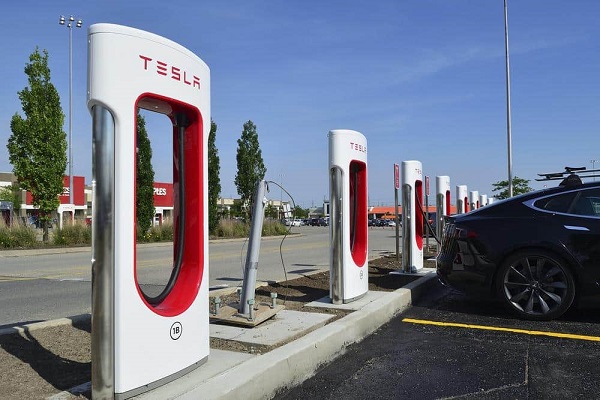
15. **The Future of Ford’s EV Lineup: What Comes Next?**The $30,000 electric pickup truck is merely the inaugural chapter in Ford’s renewed electric vehicle narrative. The modularity of the Universal EV Platform, as demonstrated in graphics shared by Ford, hints at a broader family of next-generation EVs. This adaptable foundation is capable of spawning various body styles, including a pickup truck, a three-row SUV, a cargo van, and a small crossover. While some past electric SUV projects have faced cancellations, the inherent flexibility of the platform signals Ford’s long-term vision for a diverse and cost-effective electric portfolio.
Whispers and trademark filings even suggest potential names like “Ranchero,” harking back to Ford’s two-door pickup from the 1950s and 70s. This strategic nod to heritage, infused with cutting-edge electric technology, could offer a powerful blend of nostalgia and innovation, appealing to both loyal Ford enthusiasts and new EV adopters. Such a connection could strengthen the brand’s identity in the evolving market.
Beyond new models, Ford’s commitment to digitally advanced vehicles means ongoing improvement through over-the-air updates. These updates will ensure that vehicles built on the Universal EV Platform remain packed with innovative features, continuously improving their functionality and enjoyment over time. This software-centric approach means the vehicles can evolve and adapt even after they leave the factory floor.
Car Model Information: 2019 Volkswagen Atlas 3.6L SE
Name: Fourteenth-generation Ford F-Series (P702)
Caption: 2021 F-150 XL SuperCrew
Manufacturer: Ford Motor Company
Aka: Ford Lobo (Mexico)
Production: October 12, 2020 – present
ModelYears: 2021–present
Assembly: Claycomo, Missouri,Mickleham, Victoria
Designer: Raleigh Haire (2016)
Class: pickup truck
BodyStyle: regular cab,extended cab,crew cab
Layout: Front-engine, rear-wheel drive layout,Front-engine, four-wheel drive layout
Platform: Ford T platform#T3
Related: Unbulleted list
Engine: Unbulleted list
Motor: cvt,BorgWarner
Transmission: Ford-GM 10-speed automatic transmission,Manumatic,Automatic transmission
Drivetrain: Hybrid vehicle drivetrain#Power-split or series-parallel hybrid
Battery: val,Lithium-ion battery
Wheelbase: unbulleted list
Length: unbulleted list
Abbr: on
Width: unbulleted list
Height: unbulleted list
Weight: cvt
Predecessor: Ford F-Series (thirteenth generation)
Charging: Vehicle-to-grid
Categories: 2020s cars, All articles with unsourced statements, Articles with short description, Articles with unsourced statements from September 2023, Cars introduced in 2020
Summary: The fourteenth-generation Ford F-Series is a range of pickup trucks produced by Ford, introduced for the 2021 model year. This was the first generation to include a fully-electric and hybrid pickup truck among the offerings, with the F-150 Lightning EV having entered production in 2022. The F-150 is positioned above the mid-size Ranger but below the larger Super Duty in the Ford truck lineup.
Get more information about: Ford F-Series (fourteenth generation)
Buying a high-performing used car >>>
Brand: Ford Model: electric pickup truck
Price: $17,355 Mileage: 72,895 mi.
In essence, the $30,000 electric pickup is the first tangible manifestation of Ford’s grand strategy to democratize EV ownership. By delivering on its promise of affordability, practicality, and spirited performance, Ford aims to secure a competitive edge and carve out a significant new consumer base. The unfolding story of the Universal EV Platform promises to deliver more accessible, adaptable, and genuinely innovative electric vehicles, potentially reshaping the entire EV market for decades to come.

